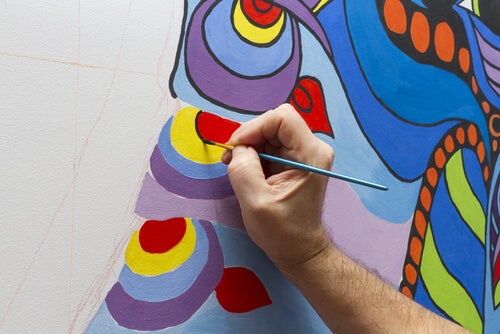Street Art, Muralism, and Muralists

Some street art, murals, in particular, constitute good storytelling because people create them right when the events are happening. Thus, they’re sensitive to the subjects. People continue painting murals and they’re becoming more popular within the various forms of expression, due to their value. This era is all about muralism and street art representation.
The artists who dedicate themselves to muralism turn gray forgotten walls into an explosion of color, often claiming their cultural and social symbols. This is a way of transforming many forgotten spaces around the cities.
Note that murals aren’t synonymous with painting for painting’s sake. In fact, various groups work to improve society through art. This article will take you on a tour of muralism and what it’s about, along with its origins and importance. Also, you’ll read about some of the most representative mural movements.
What’s street art about? What are the origins of muralism?
Many people consider muralism a type of street art. It consists of artistic interventions through various techniques and materials. There are urban languages and expressions on each wall. Also, there’s no common aesthetic, as its subject depends on the likes and dislikes of each artist.
According to Martha Cecilia Herrera and Vladimir Olat, in the article published in Nómadas magazine, mural painting is one of the most representative brands of contemporary cultures. Furthermore, these are aesthetic constructions that mobilize forms of political thought.

Muralism as a movement emerged after the Mexican revolution. The intention was to socialize art and artists rejected any work commissioned by commercial circles. They proposed the production of works that portrayed the Mexican reality. Its main representatives were Diego Rivera and David Alfaro Siqueiros.
In addition, muralism happened mainly in public buildings, and it soon began to spread throughout the American continent. Since then, people continue to make this type of art that relate aspects of their culture and society wherever there’s access to a wall.
What’s the importance of this type of street art representation?
Murals are essential because they’re a clash between the past, present, and future. They also make sense for both groups and individuals. In addition, they bring about new stories that question aspects of the current social order.
Street art questions the present and helps make certain realities both visible and memorable. Thus they give meaning to the current socio-cultural situation and open new horizons for its visibility.
Thus, these spaces are essential because they capture authentic aspects of the context through interventions. Also, they transform opaque spaces into visible and lively places.
Most of these works aren’t just about adding color to a wall and decorating it. Instead, they transform the thoughts and emotions of people from the environment through the use of paint. They even rescue neighborhoods that fell into oblivion and give them new perspectives. Thus, they mark territories and help communities emerge.
Examples of muralism
Muralism is widespread throughout the world. Here are some classic and current examples:
- Mexican muralism. This was a movement with both political and social involvement. There are reflected feelings of identity and national belonging, thus fostering a feeling of love for the country. In addition, the intention was to make the People participate in their history through the works. Also, there’s an attempt to include people, such as the indigenous community. The most outstanding members of this movement were Diego Rivera, Rufino Tamayo, and Roberto Montenegro, among others.
- Chilean street art representation. Muralism in Chile began after the visit of David Alfaro Siqueiros, the Mexican painter. It represented the popular world, the conquest, and the authentic characters. The street art expression in this country is rather peculiar due to the ever-changing architectural landscape. Such changes are due to the many earthquakes that are common there. The main representatives of this movement were Laureano Ladrón de Guevara Romero, Gregorio de la Fuente, and Pedro Olmos Muñoz, among others.
- San Francisco and muralism. Artistic expression has a long history in this city and it’s made the cultural traces of the groups that have passed through the city visible, especially that of Hispanics who have suffered discrimination. The Mission is the most representative neighborhood. The murals in it recall social struggles and painful and affirmative memories. Also, they’re the sample of the search for social and cultural recognition. In addition, many non-governmental organizations dedicated spaces to display the work of women artists.

Final notes
Note that street representation is something that continues to be made. For example, there’s a group called Urban Graphics Table in Cali, Colombia that seeks to manage, support, and carry out activities for the growth of art in the city through pedagogical projects. This is just one example that mural painting is still very much alive.
One can represent emotions and thoughts that are easily accessible to the entire public through a mural. It’s an art from another perspective, framed within the social and cultural context that floods spaces with color. It doesn’t only do it through painting but also through what it transforms, in addition to many other enriching projects.
All cited sources were thoroughly reviewed by our team to ensure their quality, reliability, currency, and validity. The bibliography of this article was considered reliable and of academic or scientific accuracy.
- Cortés, M. C. H. & Gualteros, D.V.O (2011). Ciudades tatuadas: arte callejero, política y memorias visuales. Nómadas, (35), 99-117.
- Zamorano Pérez, P.E., & Cortés López, C. (2007), Muralismo en Chile: texto y contexto de su dorso estético.
This text is provided for informational purposes only and does not replace consultation with a professional. If in doubt, consult your specialist.








